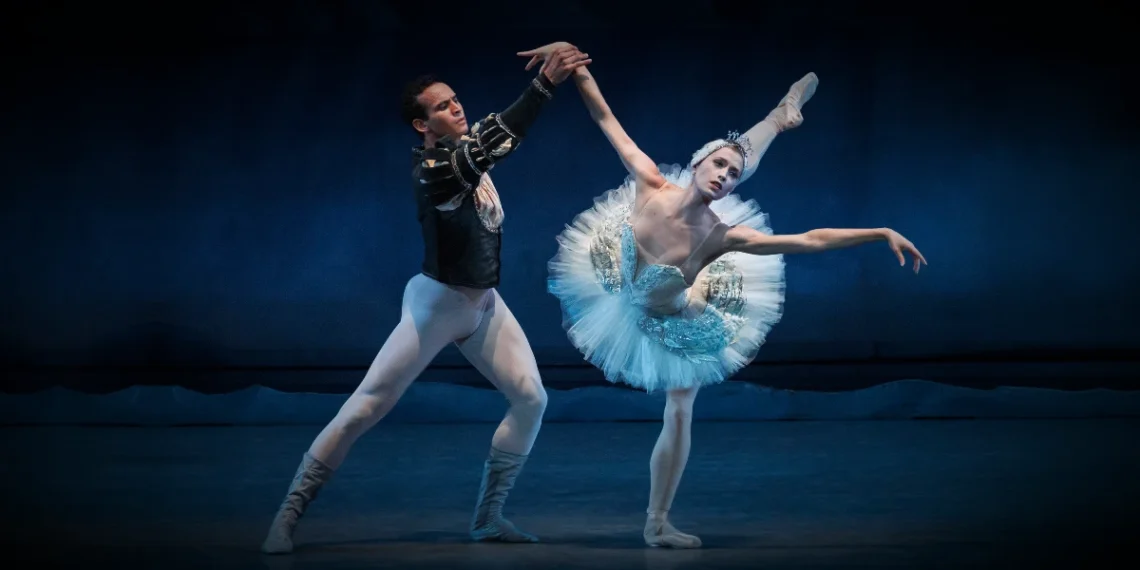NYCB All Balanchine I Review
September 28, 2025 | David H. Koch Theater – New York, NY, USA
George Balanchine’s Swan Lake offers a distinctive departure from the full-length romantic spectacle audiences may expect.
The choreographer reimagined Tchaikovsky’s original classic into a concise one-act ballet (based on Act II of the original), sharpening its emotional and visual impact.
This ballet is not your traditional tale of doomed lovers and tragic destiny. Instead, it is a neoclassical abstraction on the themes of Tchaikovsky’s iconic score – a 30-minute ballet that brings into sharp focus the very essence of the original ballet without reproducing its narrative plot.
Visually, the New York City Ballet production is striking in its simplicity.
Alain Vaes’s scenic design conjures a dreamlike world with a stylized lake and stark silhouettes, while the costumes lean toward abstract elegance and minimalism.
You may also like...
English National Ballet R:Evolution Review: A Diverse Journey from the 1940s to the Present
English National Ballet R:Evolution is an exquisitely well-thought out programme that contributed as much to its success as the dancers who performed it.
NYCB All Balanchine II Review: A Curated Homage to Excellence
The NYCB All Balanchine II program offers the audience a journey from neoclassical elegance to modernist abstraction to Americana flair.
NYCB All Balanchine I Review
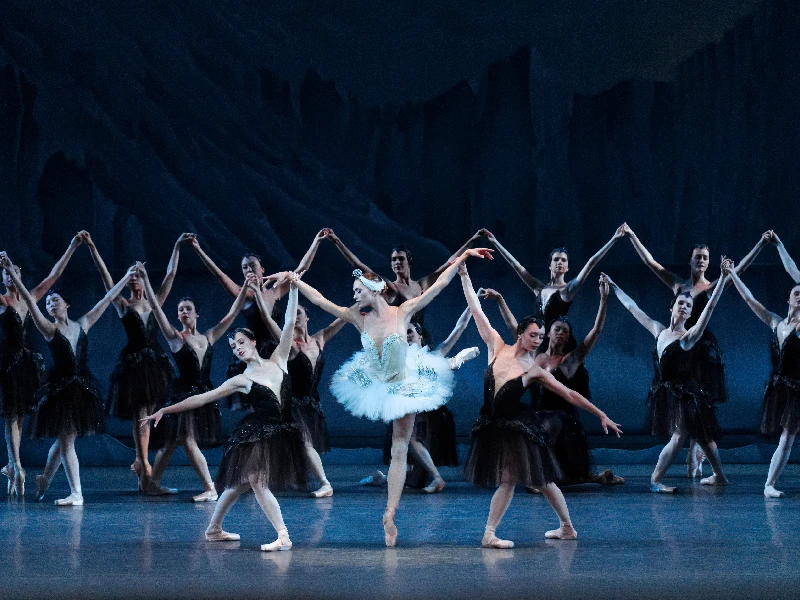
New York City Ballet’s dancers know how to make this unique ballet shine and triumph in all its splendor.
From the opening tableau, the corps of swans, dressed in shimmering black tutus, moved in mesmerizing unison, their patterns precise, their port de bras exquisitely uniform. The flawless geometry of their formations was crisp and clean.
These swans were magnificent and poignant in their collective flow, their diagonals slicing across the stage in urgent ripples, evoking both regality and restlessness.
Miriam Miller, the company’s newest principal ballerina, danced the role of Odette, Queen of the Swans. She brought a touching fragility to the role, offering a performance of rare musicality and nuance.
Miller’s Odette was a sight to behold.
Her exquisite long lines, her well-articulated port de bras – every gesture left an indelible impression.
In Balanchine’s staging of Swan Lake, Odette is no delicate ingénue trapped in a tragic romance; she is a symbol and an inspiration.
Miller, with her thoughtful phrasing, imbued each arabesque and bourrée with a quiet sense of urgency as if compelled by an invisible force. There was no melodrama in her performance, only serenity, beauty, and grace.
Ryan Tomash, as Prince Siegfried, was understated and princely. His character was more of a dreamer than a hero.
In his solos, he demonstrated control and lyricism, particularly in the sweeping turns and buoyant leaps. His partnering was assured, his presence generous. The chemistry between the leads seemed both romantic and spiritual: they danced as if trying to preserve the memory of their love.
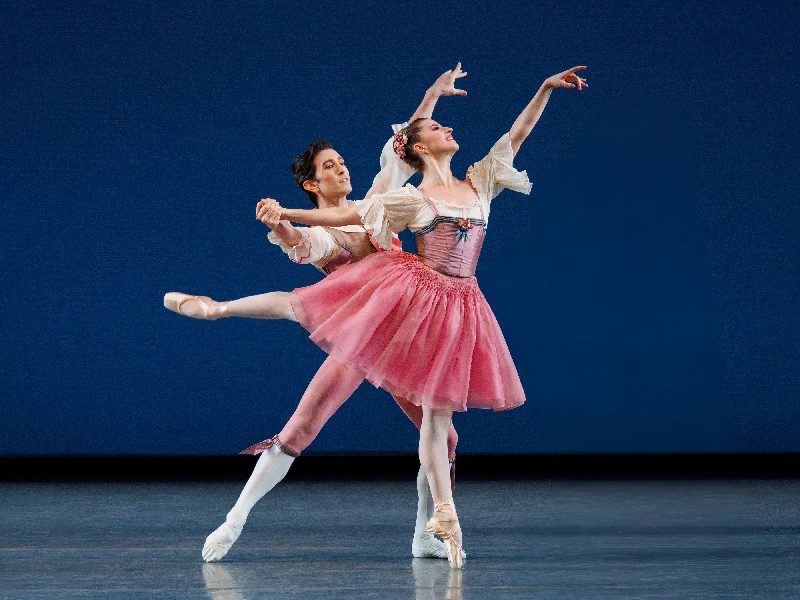
Swan Lake was the finale of the program titled “All Balanchine I,” which also included Donizetti Variations and Ballade.
The opening piece, Donizetti Variations, is a joyous explosion of classical technique, lightness, and speed, set to music from Donizetti’s opera Dom Sébastien.
From the first moments, the stage becomes alive with a flurry of bright allegro, brisk footwork and darting passages that seemed to propel the dancers forward with joyful momentum.
The corps de ballet, clad in sunny pastels, danced with keen musicality and ardor. Their entrances and exits, always swift and surprising, lent the ballet a sense of perpetual motion, like a clockwork mechanism built of quicksilver steps.
At the center of this effervescent world, the leading couple, Indiana Woodward and Anthony Huxley, delivered a performance brimming with finesse and flair.
Woodward, radiant and fleet-footed, handled the brisk choreography with an airy lightness, her jumps floating effortlessly and her turns landing with pinpoint precision. Her phrasing was exact but never rigid, imbued with the kind of musical instinct that gives each variation its own color.
Huxley matched her in vibrancy, his buoyant leaps and nimble footwork executed with unforced bravado. Together, they brought a spirit of playful dialogue to their duet (more like a teasing exchange than a formal showcase) highlighting Balanchine’s signature blend of classicism and spontaneity.
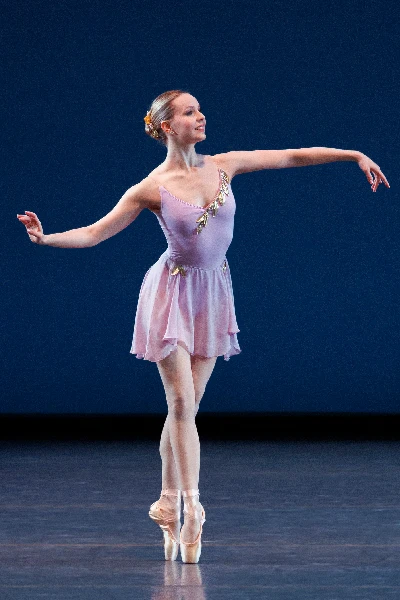
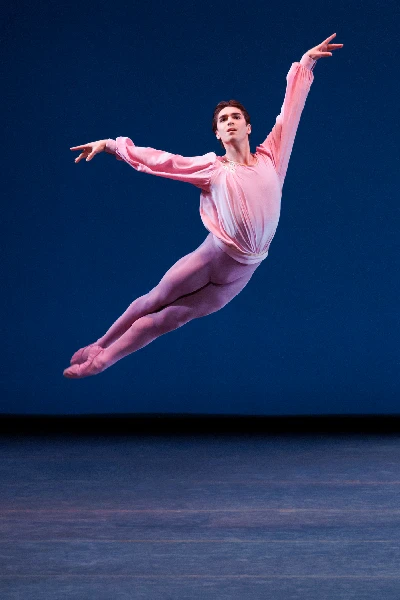
In Ballade, Balanchine’s choreography balances technical brilliance with delicate expressivity. It is a study in poise: every shift of weight and turn of the head is imbued with both precision and restraint, revealing the dancer as both instrument and storyteller. Choreographed in 1980 to Gabriel Fauré’s poetic score, this work unfolds as an intimate reflection on love and loss.
At the heart of the ballet is the central pas de deux, a quiet conversation between two souls suspended in time.
Olivia MacKinnon, light and radiant, danced her role with a poetic softness that seemed to draw the music through her body. Her partner, David Gabriel, provided quiet strength, guiding her with a calm presence that never overshadowed her, allowing the duet to breathe.
There was no grand drama here, only the subtle rise and fall of feeling, captured in the lift of an arabesque or the tender placement of a hand.
As the final notes faded and the dancers slipped into darkness, the impression lingered – a ballet not meant to dazzle, but to move and, perhaps, to momentarily suspend the rush of the world outside.
Featured Photo for NYCB All Balanchine I of New York City Ballet dancers Miriam Miller and Ryan Tomash in George Balanchine’s Swan Lake. Photo by Erin Baiano.


